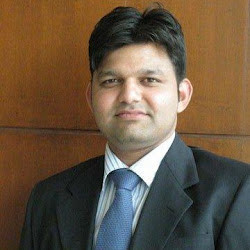About Union Budget of India
The Union Budget is presented by the Minister of Finance in Parliament every year on the last working day of February. The budget is a comprehensive report of the state of the government's finances. It gives a detailed account of the revenues earned from different sources and the expenses incurred in all projects undertaken by it.The budget is prepared after holding discussions with various government departments and ministries over months. Printing of Budget documents begins about a week ahead of presenting in the Parliament with a customary 'Halwa ceremony'. In this, halwa (a sweet dish) is prepared and served to all officers and support staff who work in isolation in the North Block office until the Budget is presented. The halwa ceremony is part of the Indian tradition of having something sweet before undertaking an important work.
Union Budget 2016: Key Highlights
Amid concerns over slowdown of the world economy, Union Finance Minister Arun Jaitley presented his third general budget in the Parliament today. “I am presenting the budget when the global economy is in crisis,” Jaitley said, as he began his budget speech which lasted a little more than an hour. The Finance Minister, however, added that India remained the bright spot in this gloom turning difficulties into opportunities.Jaitley stated that India's GDP growth has grown to 7.6% in spite of slowdown in exports and inflation had eased to 5.4%, bringing a much-needed relief to the general public. He also said that foreign exchange reserves were at an all-time high of $350 bn. The Current Account Deficit (CAD) is now 1.4% of the GDP.
Focus Rural India
Jaitley's budget has rightly given foremost priority to rural India. It has allocated a sum of Rs. 87,765 crore for rural development. The Finance Minister said that his government will put aside additional resources for vulnerable people in rural areas. The budget has allocated Rs. 35,894 crore for schemes related to agriculture and farmer's welfare.Key Announcements
- The famed MNREGA scheme has been allocated Rs. 38,500 crore
- Rs 5,500 crore has been assigned for Pradhan Mantri Fasal Beema Yojana
- A target has been set to complete 100% village electrification by 1 May 2018
- 300 Rurban clusters set to be developed under the Shyama Prasad Mukherji Rurban Mission
- 5 lakh acres of land to be brought under organic farming in next 3 years to boost organic farming
- Plans to launch Digital Literacy Mission Scheme for rural India which will cover about 6 crore additional households in the coming three years
Building Infrastructure, Attracting Investments
Strengthening the country's infrastructure, attracting investments and fostering entrepreneurship are an important agenda for the government to fulfill its budget theme of 'transforming India'. The total outlay for infrastructure in Budget 2016 is Rs 2,21,246 Cr.The Finance Minister has proposed to allocate Rs 55,000 crore for roads and highways. The total investment in roadways sector is to be Rs 97,000 crore. Jaitley also stated that as many as 160 airports and airstrips can be revived at a cost of Rs 50 to Rs 100 crore each.
Key Announcements:
- Department of Disinvestment to be renamed Department of Investment and Public Asset Management
- 100% FDI through FAPB route in marketing of food products produced and manufactured in India
- Proposal to make 100 model career centres operational by the end of 2016.
- 1500 multi-skill training institutes to be set up.
- Rs. 1000 cr allocated for higher education.
- National SC/ST Hub to support SC/ST entrepreneurs.
- 'Start Up India, Stand Up India' Scheme to get Rs.500 crore for SC, ST and women entrepreneurs.
- Increased allocation of Rs 1,80,000 crores under PM MUDRA Yojana
Noting that retail trade is the largest service sector employer in the country right now, the Finance Minister said that many more jobs can be created if regulations are simplified. He suggested making necessary amendments in the Motor Vehicles Act to open up the road transport sector in passenger segment. He also proposed to streamline institutional arrangement for resolution of disputes in infrastructure related to construction contracts, public utility contracts and PPP.
Social Welfare Schemes
Among a few social welfare schemes announced in the budget this time were a new health protection scheme to provide health cover up to Rs 1 lakh per family. Senior citizens will get additional healthcare cover of Rs. 30,000 under this scheme. The PM Jan Aushadhi Yojana is to be strengthened by opening 300 more generic drug stores. A National Dialysis Services Program will be introduced under National Health Mission.Key Tax Proposals
The tax proposals are the most keenly followed part of the budget every year by the great Indian middle class and industrialists alike. The income tax slabs have been kept unchanged. Excise duty on most tobacco products and cars have been raised.The Finance Minister has proposed to amend the Customs Act to provide for deferred payment of custom duty for importers and exporters with proven track record. He also proposed to exempt service tax on services provided under Deen Dayal Upadhyaya Gramin Kaushalya Yojana.
Jaitley made a case for slashing corporate IT tax rate for next fiscal of relatively small enterprise companies with turnover below Rs. 5 crore. The FM said that his government is committed to implement GAAR from 1 April 2017.
He incorporated Rahul Gandhi's suggestion on providing relief to the differently-abled by giving duty exemption on braille paper. Jaitley announced that as many as 13 cesses, with collection of less than Rs. 50 crores a year, will be abolished to reduce multiplicity of taxes.
Tackling the Menace of Black Money
Stating that the government was committed to removing black money from Indian economy, Jaitley announced a limited period tax compliance window from 1 June to 30 September for declaring undisclosed income at 45% inclusive of surcharge and penalties.Other Important Announcements:
- Krishi Kalyan Cess to be Imposed on All Taxable Services for Agricultural Sector.
- Service tax exemption for construction of affordable housing up to 60 sq. m. under state and central housing schemes.
- Service tax will be exempted for general insurance schemes under Niramayi Swasthya Bima Yojna
- HRA deduction will be increased from Rs. 24,000 to Rs. 60,000 p.a.
- Aim to provide an LPG connection in the name of women members of poor households.
- New scheme will be launched for giving gas connection to BPL families
- Statutory backing for Aadhaar platform will ensure delivery of benefits.
- Rs 9,000 cr has been allocated for Swachh Bharat Mission.
- Relief has been provided for small taxpayers who neither own a house nor get house rent allowance from employers.
- Plan and non-plan classification to be done away with from 2017-2018
- Rs 1,000 crore has been allotted for New EPF Scheme.
Union Budget Session 2015-16
The Union Budget is the premier document featuring the financial planning and strategy of the Government of India for the next fiscal. The Union Budget of India for the 2015-16 fiscal was presented in the Lok Sabha (Lower House of the parliament) by the Union Minister of Finance Arun Jaitley on 28 February 2015.The people of India had a lot of expectations from the Union Budget for the 2015-16 financial year. The expectations soared high owing to the fact that the ruling Narendra Modi government had promised a lot to the people while campaigning for the General Elections 2014. The BJP led NDA had attained clear majority riding on its Prime Ministerial candidate Narendra Modi's development agenda and his track record in this regard. So, the Union Budget had to reflect what was promised.
Main Highlights of the Union Budget 2015-16
Income Tax- It was expected that the slabs of the Personal Income Tax will be brought down and the Tax Payer will be relieved to some extent, but the income tax slabs for individuals remained the same as earlier. On the other hand, the Wealth Tax was revoked completely. While the surcharge was raised to 10-12% on Hindu Undivided Families (HUF), Bodies of Individuals (BOI), Associations of Persons (AOPs), cooperative societies, firms, artificial juridical persons, local authorities and individuals.Social Security- As their pension fund, a choice between Employee Provident Fund (EPF) and National Pension Scheme (NPS) was given to the salaried employees. To upgrade the social security for poor citizens, one Pensions Fund and two new insurance schemes were introduced. As per the provisions of the Pradhan Mantri Suraksha Bima Yojna scheme, persons with full disability (or death) will get a coverage of Rs. 2 lakh, while the persons with partial disability would get a compensation worth Rs. 1 lakh, with just Rs. 12 per annum as the premium.
A life insurance scheme by the name Pradhan Mantri Jeevan Jyoti Bima Yojna was also announced in the budget, which assures Rs. 2 lakh to a beneficiary in case of death. An annual premium of Rs. 330 will be payable under the scheme. A pensions scheme meant for the un-organised sector by the name Atal Pension Yojna was also announced.
Service Tax- The Finance Minister Arun Jaitley announced a raise in the service tax from 12.36% to 14%. An additional 2% tax to be levied on a select few services under the 'Swach Bharat' cess was also announced. The Mutual Fund agents would no longer enjoy the exemption on the service tax, on the other hand exemption was provided to the Varishtha Bima Yojna meant for senior citizens.
Corporate Tax- Arun Jaitley, the Finance Minister, also announced that starting from April 2016, the Corporate Tax rates will also be brought down from 30% to 25% over a period of four years. It was announced that earnings above 10 crores will have to bear 2 % surcharge. The minister said that 100% deduction will be applicable to the Clean Ganga Plan and Swach Bharat Abhiyan to the donations made under the corporate social responsibility.
Custom Duty- Import duty was lifted from 22 components used in electronics sector. The custom/import duty was further removed from magnetrons, solar water heaters, refrigerator components and peacemaker components. But the duty levied on imported commercial vehicles was raised from 10% to 40%.
Announcements related to Education A total of Rs. 69,074 were allocated to the education sector. To enable the minority youth in order to find employment without school leaving certificate, the government introduced a scheme called Nayi Manzil. The Finance Minister made major announcements in the education sector — five new All India Institute for Medical Sciences (AIIMS) to be set up in the states of Punjab, Jammu & Kashmir, Himachal Pradesh, Tamil Nadu and Assam. The state of Karnataka will witness the setting up on an Indian Institute of Technology (IIT), while two Indian Institute of Managements (IIM) will be set up in Andhra Pradesh and Jammu & Kashmir.
- National Institutes of Pharmaceutical Education and Research to come in Rajasthan, Chhattisgarh and Maharashtra.
- Post Graduate Institute of Horticulture Research and Education in Amritsar.
- Institute of Science and Education Research in Odisha and Nagaland.
- Apprenticeship Training Institute for Women in Haryana and Uttarakhand.
One of the most special and innovative announcements made by the Finance Minister Arun Jaitley was the introduction of a special Gold Coin as a mode of gold deposit. This was done to discourage the import of gold. The special gold coin will feature the Ashok Chakra on the face.
Last Updated on : February 25, 2016


